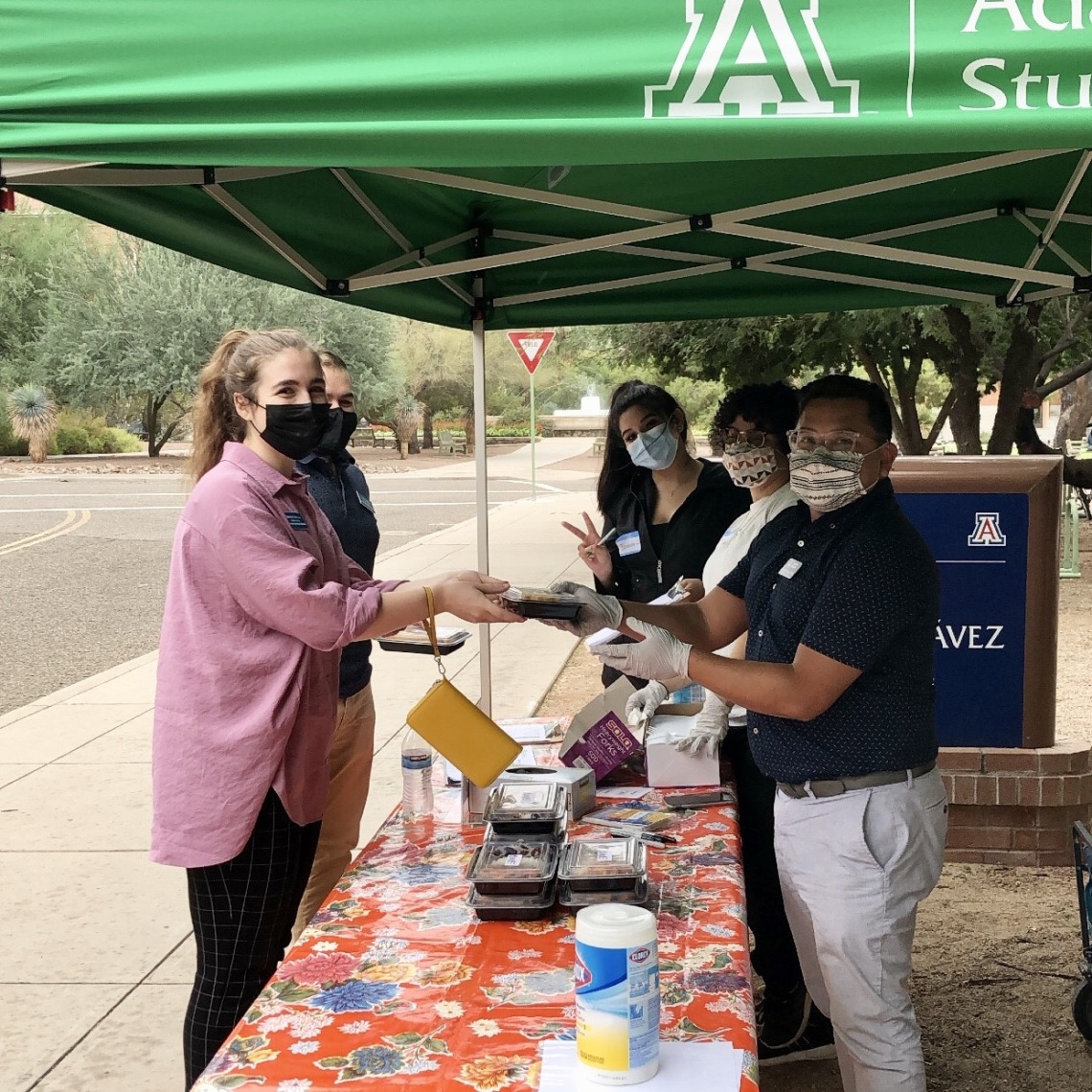Embracing Food Accessibility with Cultural Diversity on Campus

"A Fed Person is a Healthy Person.- Unknown"
The ability to access a diverse range of foods would seemingly be a simple task in today’s world. We live among numerous grocery stores while convenient and ready-to-eat foods are located at every corner. Naturally, we all have different experiences with food such as, utilizing it to bond with family and friends, connecting with our culture, or a way to relax and unwind at the end of the day. Additionally, we understand the physiological importance of food for energy production and overall health in the body. Therefore, access to food is a basic need and a human right, yet 13% of US households experience food insecurity1. Food insecurity can be described as a “limited or uncertain availability of nutritionally adequate and safe foods or limited or uncertain ability to acquire acceptable foods in socially acceptable ways.”1
Food insecurity continues to be a problem that reaches all corners, including college students. A fall 2019 survey of nearly 167,000 students nationwide found that 39% of students at two-or four-year schools had experienced food insecurity in the last 30 days.2 These surprising statistics indicate a need for change. The University of Arizona is committed to reducing these occurrences within its own wildcat community by creating awareness of food justice, cultural inclusiveness, and promoting knowledge of available programs for all students on campus.
Food Justice Is Essential
Food justice for all communities is essential to provide safe food opportunities. Food justice is defined as “the right of communities everywhere to produce, process, distribute, access, and eat good food regardless of race, class, gender, ethnicity, citizenship, ability, religion, or community.”3 While this idea is the ultimate goal, it is important to acknowledge the lack of equity and ability to view communities with a social justice lens throughout US food systems. For example, food injustices have included communities of color as they are disproportionately affected by these inequities and experience higher rates of food insecurity.4 This is often because we tend to take individualized approaches to systemic issues. Additionally, these locations can be mistakenly considered “food deserts” when discussing food insecurity risks and become the focus of “disinvestment”5 which creates extra challenges for populations. As a result, these barriers limit health provider efforts to promoting healthy eating practices.
The UA’s mission includes removing the term “food deserts” and adopting a “food apartheid” concept to promote “food sovereignty through community-driven solutions and systemic change”5 to reduce impacted groups and foster food justices with healthy eating opportunities.
Cultural Importance
Culture plays a significant role in many aspects of our lives, especially when discussing cultural foods. Foods can help us embrace and identify with our culture or allow us to experience the culture of other’s, it can bring a sense of togetherness. These ideas emphasize the importance to support and encourage diverse foods. Some ways that our UA community has accomplished this around campus includes farmer’s markets, food focused programs like Aromas at the Guerrero Student Center, and different culturally themed restaurants around campus and in the Student Union.
Resources on Campus
Public health efforts should always aim to ensure safe access to quality and nutrient dense foods for all people. On our campus, there are many resources that are geared toward making UA’s campus inclusive for students to have easy food access while supporting cultural diversity. For example, Campus Pantry is a student-run program that works toward ending food assistance stigma by making food accessible to students and providing a range of foods to enjoy or try. As humans who need food to survive, and as students that need fuel to learn and adapt to their environment, these basic needs are crucial to allow anyone to thrive in any setting. This means keeping bellies full.
References
- Holben, D. H., & Marshall, M. B. (2017). Position of the Academy of Nutrition and Dietetics: Food Insecurity in the United States. Journal of the Academy of Nutrition and Dietetics, 117(12), 1991–2002. https://doi.org/10.1016/j.jand.2017.09.027
- Horst M, McClintock N, & Hoey L, (2017) The Intersection of
Planning, Urban Agriculture, and Food Justice: A Review of the Literature, Journal of the American Planning Association, 83:3, 277-2
- Kimani, M. E., Sarr, M., Cuffee, Y., Liu, C., & Webster, N. S. (2021). Associations of Race/Ethnicity and Food Insecurity With COVID-19 Infection Rates Across US Counties. JAMA Network Open, 4(6). https://doi.org/10.1001/jamanetworkopen.2021.12852
- Sevilla N. Food apartheid: Racialized access to Healthy Affordable Food. NRDC.https://www.nrdc.org/experts/nina-sevilla/food-apartheid-racialized-access-healthy-affordable-food. Published April 5, 2021. Accessed October 1, 2021.
- https://campuspantry.arizona.edu/
- https://diversity.arizona.edu/cultural-and-resource-centers
